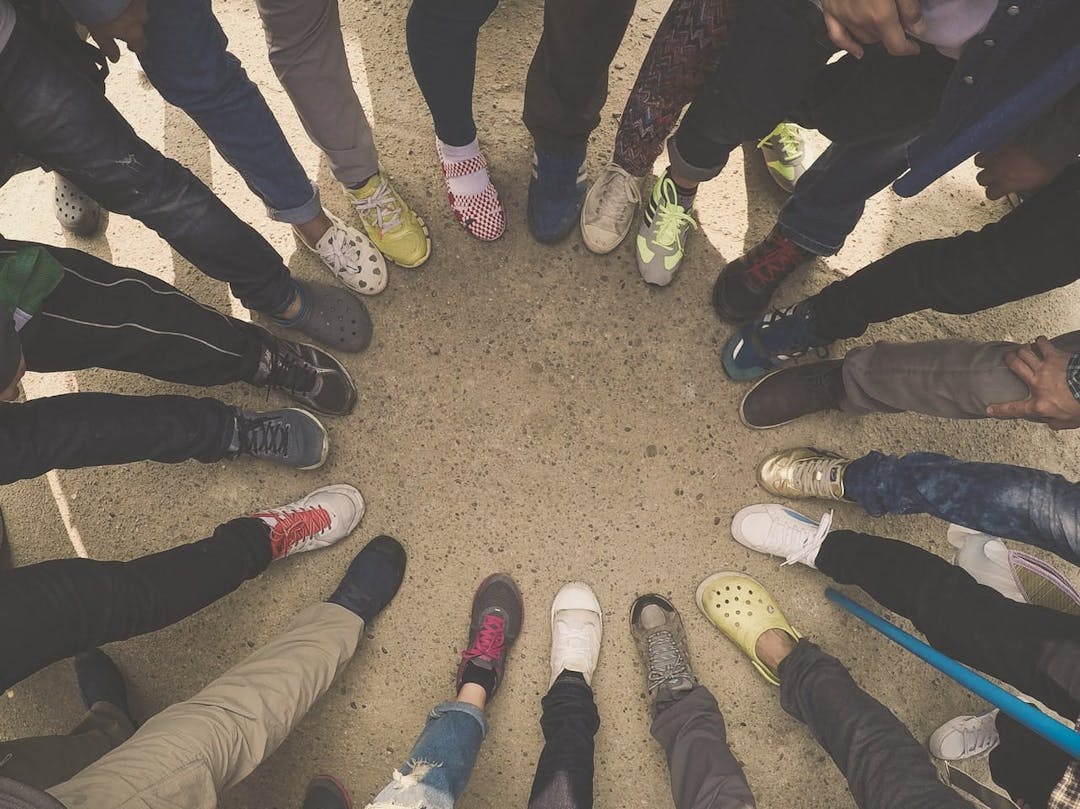How Social Norms Complicate Behavioral Research
Do I contradict myself? Very well then I contradict myself, (I am large, I contain multitudes.)
- Walt Whitman (1819–1892)
Walt Whitman was not alone in contradicting himself. We all contain multitudes; different rules of behavior that depend on the situation or context we find ourselves in. Our minds are generous at glossing over these contradictions; there is comfort in seeing ourselves as consistent, steadfast individuals. But we are heavily influenced by the numerous social groups we belong to, and the social norms associated with them. These dynamics are challenging to map and predict, which threatens consultants with unpredictable results. Behavioral scientists that hope to make change by altering social norms must do so with reservations and several strategies in mind.
Social norms, social chameleons
The human prefrontal cortex bestows on us the ability to respond and adapt to complex social networks unlike any other animal on earth. We are social chameleons, shrewdly altering behavior to the norms of the group with which we currently identify.1 I, for one, have discovered that my wife’s work personality is remarkably different from the one I was previously accustomed to, now that we are both working from home. The influence of social norms can be subtle and mutable, yet it is striking to observe someone’s behavior when you are unfamiliar with the social milieu they are interacting with.
Behavioral economics, which often utilizes low-effort “nudges” to influence behavior, can easily be knocked off course by anomalies in actual versus predicted social behavior. A recent study found that the type of behavioral intervention that failed most often was those involving social norming or social comparisons (40% of 65 cases).2 A principle explanation postulated for this failure was the disparate responses of subgroups of the target population to a social norming message. By not considering the context and framing of different scenarios, we can miss out on forecasting the divergent response of various individuals to the same basic situations.
Behavioral Science, Democratized
We make 35,000 decisions each day, often in environments that aren’t conducive to making sound choices.
At TDL, we work with organizations in the public and private sectors—from new startups, to governments, to established players like the Gates Foundation—to debias decision-making and create better outcomes for everyone.
The intricate nature of social norms
A major issue with influencing behavior via social norms is that the group or social identity with which a person identifies is variable and context-dependent. 3 We exhibit different behavior depending on what group we currently identify with, and we rapidly switch our perspective depending on the context of the situation we find ourselves in.
The D.A.R.E. (Drug Abuse Resistance Education) program, a U.S. campaign to reduce drug use among teens that was most active in the late 1980s and 1990s, serves as an example of a behavioral intervention gone awry due to social norms. Research on the program has shown not only that it was an ineffective use of hundreds of millions of dollars, but that in some cases it actually increased drug use amongst teens.4
One of the shortcomings of the program was that, by imploring teens to ignore peer pressure to use drugs, it made drug use seem more pervasive than it actually was, thereby positioning it as normative behavior.5 Meanwhile, programs that position drug users as independent and autonomous can ironically appeal to adolescents seeking to identify with such traits.6 This type of Catch-22 situation can make it extremely difficult to find the right social norms to engage in an effective behavioral science intervention.
Additionally, social norms tend to operate in an intangible and implicit manner7—they are difficult to consciously identify and we tend to underestimate their impact in our lives. Have you ever met someone who openly admitted that they purchased a BMW or Mercedes-Benz purely for the status that it afforded them?
Dealing with behavioral volatility
It’s rare that a behavioral intervention forecasts the influence of social norms completely accurately. But there are a couple of things that make this sort of intervention more exact.
Firstly, the effectiveness of an intervention campaign utilizing social norms can be improved by considering when and where the subject will be exposed to the intervention, and whether the relevant targeted identity is salient at the time.5
Distinguishing all the groups your target will identify with and the strength of these associations is valuable. Likewise, understanding why, how, and when they identify with these groups is important. By segmenting and mapping out potential in- and out-groups and their influences on behavior, you have a better chance of identifying which factors are important to success and what you need to do to improve effectiveness of your actions.
Another approach is to identify what works for whom and the contexts and scenarios that enable this. Then you could target a particular sub-group or utilize different actions for the various sub-groups. For instance, in the case of the D.A.R.E. program, having two different anti-drug programs—one for schools where drug usage is above the national average and one for schools where it is already low—could possibly help alleviate some of the problems found in the original program. By framing the communication according to the type of group identified, programs can be customized according to the needs, motivations, and norms inherent to a particular profile.
For example, having the police present the D.A.R.E. program’s message could be problematic in a country where overall confidence in the police is below the 50% mark for certain segments of the population.9 If the program is defining drug usage as an out-group behavior to a group of teens who are seeking autonomy and are distrustful of authority, a police officer is probably not the best spokesperson for the job. Perhaps utilizing different spokesmen to communicate with different groups would be a better option.
When it comes to research and testing, what someone in a room filled with other people tells you about their behavior should not usually be taken at face value. Using implicit research methods such as Implicit Association Tests (IATs) and priming experiments, which detect the strength of a person’s subconscious association between mental representations of concepts, can help identify factors that are hidden or hard to articulate.
Lastly, observing actual behavior is key. Run small-scale experiments if possible. Try A/B testing, or rolling out separate interventions to different groups of participants and comparing the results (with proper controls and sampling of course). Don’t go all-in unless you have a lot of evidence that your theories are validated.
The multitudes we all contain make our actions challenging to predict. If we contradict ourselves, it’s often due to the turbulent impact of social norms on our behavior.
References
- Social Norms – Biases & Heuristics. (2020, November 14). The Decision Lab. https://thedecisionlab.com/biases/social-norms/
- Osman, Magda & Mclachlan, Scott & Fenton, Norman & Neil, Martin & Löfstedt, Ragnar & Meder, Björn. (2020). Learning from behavioural changes that fail. 10.13140/RG.2.2.30028.03208.
- Reynolds, K. J., Subašić, E., and Tindall, K. (2015). The Problem of Behaviour Change: From Social Norms to an Ingroup Focus. Social and Personality Psychology Compass, 9, 45– 56, doi: 10.1111/spc3.12155.
- West, S. L., & O’Neal, K. K. (2004). Project D.A.R.E. outcome effectiveness revisited. American journal of public health, 94(6), 1027–1029. https://doi.org/10.2105/ajph.94.6.1027.
- Olds, R. S., & Thombs, D. L. (2001). The relationship of adolescent perceptions of peer norms and parent involvement to cigarette and alcohol use. The Journal of school health, 71(6), 223–228. https://doi.org/10.1111/j.1746-1561.2001.tb01322.x
- Slater, M. D., Kelly, K. J., Edwards, R. W., Thurman, P. J., Plested, B. A., Keefe, T. J., Lawrence, F. R., & Henry, K. L. (2006). Combining in-school and community-based media efforts: reducing marijuana and alcohol uptake among younger adolescents. Health education research, 21(1), 157–167. https://doi.org/10.1093/her/cyh056.
- Hogg, M. A., & Reid, S. A. (2006). Social Identity, Self-Categorization, and the Communication of Group Norms. Communication Theory, 16(1), 7–30. https://doi.org/10.1111/j.1468-2885.2006.00003.x.
- Dempsey, R. C., McAlaney, J., & Bewick, B. M. (2018). A Critical Appraisal of the Social Norms Approach as an Interventional Strategy for Health-Related Behavior and Attitude Change. Frontiers in Psychology, 9, 1. https://doi.org/10.3389/fpsyg.2018.02180.
- Norman, B. J. (2018, March 14). Confidence in Police Back at Historical Average. Gallup.Com. https://news.gallup.com/poll/213869/confidence-police-back-historical-average.aspx
About the Author
John Laurence
John’s interest in neuroscience, consumer psychology and behavioral science led him to establish a neuromarketing agency in South Africa in 2011. Over the past decade he has developed various research methodologies utilizing EEG, GSR, eye tracking and implicit association testing. Combining these tools with insight from fields such as behavioral economics, he has worked on a variety of marketing initiatives, including ad testing, new product development, price positioning, in-store marketing and communication strategy.





